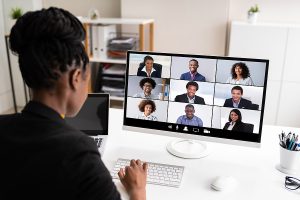 Human Resources (HR) in government has always been complex. From very specific hiring criteria to security clearances to battling the stereotypes of government work, it's never been a task for the faint of heart. Then came a global pandemic. HR departments had to quickly pivot to serve a remote workforce and find ways to continue filling positions critical to the government response to COVID-19.
Human Resources (HR) in government has always been complex. From very specific hiring criteria to security clearances to battling the stereotypes of government work, it's never been a task for the faint of heart. Then came a global pandemic. HR departments had to quickly pivot to serve a remote workforce and find ways to continue filling positions critical to the government response to COVID-19.
To meet the needs of a remote workforce, HR needed a clear understanding of every job function within the organization to help guide employees on how to adapt their processes to complete that work remotely. It also meant ensuring that employees had the technology they needed to complete their work at home. As new laptops and software were issued, HR and IT had to work together to distribute and track the flow of new technology. As if serving existing employees was not enough, agencies also had to continue recruiting and hiring.
It has not all been easy or smooth, but a Monster.com survey found that 100% of agencies reported they implemented new remote hiring processes. This included virtual onboarding, virtual interviews, electronic signatures, and virtual oath of office.
Beyond the immediate needs of transforming office workers into remote workers, government HR professionals have several other overarching challenges to contend with. Continue reading


 The impact of the coronavirus will have a long-lasting effect on the events market. At
The impact of the coronavirus will have a long-lasting effect on the events market. At  We've written about the government's ongoing efforts to improve their ratings when it comes to "customer"
We've written about the government's ongoing efforts to improve their ratings when it comes to "customer"  This spring, the concept of
This spring, the concept of 

